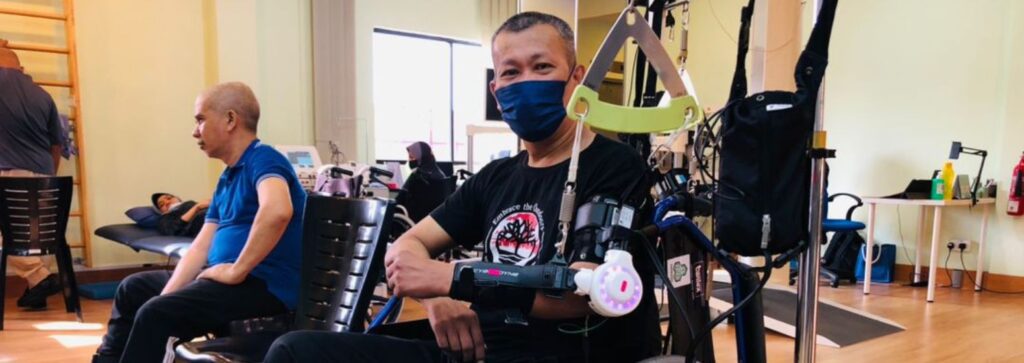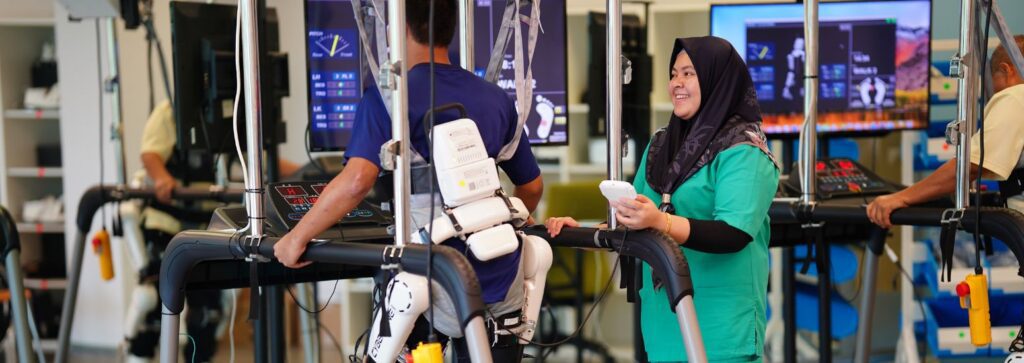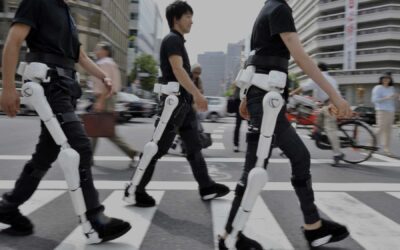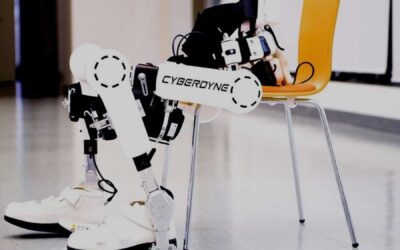The world’s first technology to support, enhance, and regenerate the wearer’s physical functions based on their intentions is HAL [Hybrid Assistive Limb]. It is often referred to as the “Wearable Cyborg” due to this capability.
HAL Treatment

The use of HAL for functional regeneration is an advanced treatment method that enhances human brain, nerve, and musculoskeletal functions by stimulating the body’s natural self-healing capacity.
Even the smallest body movements can trigger the transmission of nerve signals from the brain to the muscles, resulting in the movement of the entire musculoskeletal system as faint “bio-electrical signals” emanate through the skin’s surface.
Before the HAL is worn by a patient, a certain requirement must be met. The HAL functions as a conversion device and relies on the patient’s body to produce adequate electrical signals, indicating that the nerves connecting the patient’s legs to the brain must retain some level of functionality.
The artificial limb leverages the body’s innate healing capacity, with the HAL requiring the patient to contribute a portion of the effort. Once this is achieved, the HAL can interpret the patient’s intentions to generate desired outcomes.
HAL Equipped Therapy
HAL is equipped with two different control systems that can be utilised based on the user’s specific circumstances. The “Cybernics Voluntary Control System” relies on bio-electrical signals (BES) to execute the movements that the wearer intends to make. On the other hand, the “Cybernics Autonomous Control System” is designed to replicate human-like movements even when BES cannot be detected. These two control methods are what make HAL such an advanced technological innovation.
When an individual attempts to move, the brain sends a signal to the muscles to initiate the intended movement. At this point, a very subtle signal indicating the wearer’s intention to move becomes apparent on the surface of the skin. HAL utilises sensors attached to the skin’s surface to detect these signals, also known as “bio-electrical signals,” in order to carry out the desired movements based on the wearer’s voluntary commands.
The Cyberdyne treatment involves the use of a robotic suit that interprets the patient’s intention to move their legs. It was designed for individuals with spinal cord injuries, and the Hybrid Assistive Limb (HAL), also known as the lower limb exoskeleton, enables patients to enjoy the experience of standing up or walking.
Recovery By Cyberdyne Technology

The HAL Robo Suit brings about a positive change in the lives of patients who have experienced stroke or paralysis, which impacts the spinal cord, joints, and the central nervous system.
For individuals who have suffered life-altering injuries, it’s important to recognise that the damage extends beyond the physical body. Assessing the patient’s mental well-being is crucial for effective collaboration with the HAL and can help prevent frustration during the recovery process.
Our Patient’s Testimonials
At Brooks Rehabilitation, Derrick, one of our patients, expressed his gratitude for the support he received during his three-month stay. He also expressed hope for the future of individuals with severe injuries upon completing his treatment at the Brooks Cybernic Treatment Centre. Derrick feels honored to have been among the first individuals in the US to benefit from the Cyberdyne HAL technology, which provides optimism for those seeking rehabilitation and those who have been told they may never walk again. Therefore, he encourages others to remain determined and not lose hope.
For more info and a demo log onto https://rehabmodalities.com/



